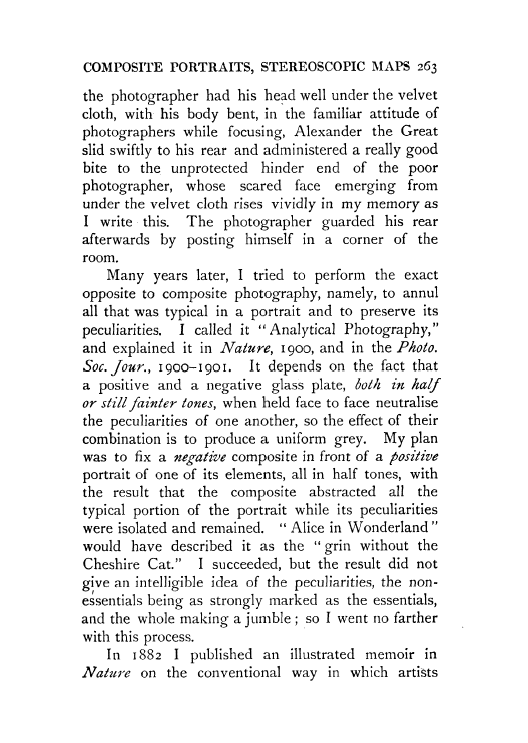COMPOSITE PORTRAITS, STEREOSCOPIC MAPS 263
the photographer had his head well under the velvet cloth, with his body bent, in the familiar attitude of photographers while focusing, Alexander the Great slid swiftly to his rear and administered a really good bite to the, unprotected hinder end of the poor photographer, whose scared face emerging from under the velvet cloth rises vividly in my memory as I write this. The photographer guarded his rear afterwards by posting himself in a corner of the room.
Many years later, I tried to perform the exact opposite to composite photography, namely, to annul all that was typical in a portrait and to preserve its peculiarities. I called it " Analytical Photography," and explained it in Nature, 1900, and in the .Photo. Soc, four., i 9oo-1901. It depends on the fact that a positive and a negative glass plate, both in half
f
or still fainter tones, when held face to face neutralise the peculiarities of one another, so the effect of their combination is to produce a uniform grey. My plan was to fix a negative composite in front of a positive portrait of one of its elements, all in half tones, with the result that the composite abstracted all the typical portion of the portrait while its peculiarities were isolated and remained. " Alice in Wonderland " would have described it as the " grin without the Cheshire Cat." I succeeded, but the result did not give an intelligible idea of the peculiarities, the nonessentials being as strongly marked as the essentials, and the whole making a jumble ; so I went no farther with this process.
In 1882 I published an illustrated memoir in Nature on the conventional way in which artists

